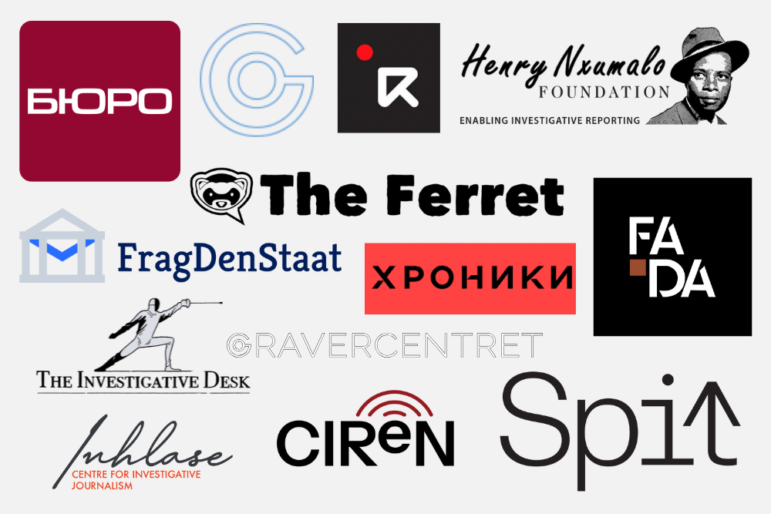

Business Tools — Chapter 5
Guide Resource
Business Tools
Chapter Guide Resource
Business Tools — Chapter 1
Chapter Guide Resource
Business Tools — Chapter 2
Chapter Guide Resource
Business Tools — Chapter 3
Chapter Guide Resource
Business Tools — Chapter 4
Chapter Guide Resource
Business Tools — Chapter 5
Chapter Guide Resource
Business Tools — Chapter 6
Chapter Guide Resource
Business Tools — Chapter 7
Chapter Guide Resource
Business Tools — Chapter 8
Chapter Guide Resource
Business Tools — Chapter 9
Chapter Guide Resource
Business Tools — Chapter 10
Chapter Guide Resource
Business Tools — Chapter 11
Chapter Guide Resource Video
Video: GIJC23 – Developing a Business Strategy (Part 1 & 2)
Here are tools for directly receiving input and feedback from site visitors, whether you’re looking to do a survey or add a moderated comments section. While collecting data from your audience provides important insights and can strengthen reporting or your awareness of your readers’ interests, it’s crucial to ensure that the questions you ask and tools you use comply with GDPR regulations.
Survey Tools and Forms
If your organization already uses Google Workspace, Google Forms might be the easiest — and also, low or no-cost — solution for surveys, polls, and otherwise collecting information from visitors for your site. However, Google Forms does not prioritize GDPR compliance. If you’re using WordPress, also try NinjaForms, mentioned in the WordPress section.
SurveyMonkey allows users to create surveys using a wide variety of templates, and then share the survey via email, social media, QR code, or URL (notably, the free plan does not allow users to embed surveys in a webpage). It provides a clean, exportable report of survey responses. Paid versions permit multiple users to collaborate on survey creation and review, increase the number of questions and responses a survey can accept, and include a suite of analysis tools.
Cost: Free plan allows the creation of a quiz with up to 10 questions, and allows the user to view up to 40 responses. Basic business plan starts at $25 per user per month; discounts available for “some nonprofits and charities.”
Languages: Available in 16 languages. Paid plans allow users to send out surveys in 55 different languages.
Tally is a flexible, embeddable, form creation tool. Users can create forms with supplied templates, or create their own. Tally’s free plan allows for unlimited questions and unlimited submissions, and includes advanced features like conditional questions (supplying a user with questions depending on their answer to a previous question), automated calculations and tallying, integration with numerous other softwares, and the ability to collect payments through the form.
Cost: Free for most features, with a 5% fee for payment processing; paid plan offers more features and removes Tally’s branding at $29/month.
Languages: English, Dutch, French, Italian, Spanish, German, and Korean.
Like SurveyMonkey, Typeform provides users with easy-to-edit survey templates. Typeform emphasizes the eye-catching design of its surveys, and similarly offers engaging reports and analysis. You can send the surveys out via email or social media, or embed it in a webpage, a feature which is included in its free version.
Cost: Free plan allows the creation of a quiz with up to 10 questions, and allows the user to view up to 100 responses. Notably, the free version does allow users to embed the form in a website. Basic plans begin at $25/month.
Languages: English and Spanish.
User Comments
Coral began as a Knight Foundation-funded project to design a comment platform for news organizations to encourage audience engagement and dialogue while preventing abuse. Now a service of Vox Media, many large news websites like Der Spiegel and the Washington Post use Coral’s Talk to surface thoughtful comments while minimizing spam and otherwise problematic language. It allows moderators to promote certain comments and to reward frequent or productive commenters with badges, incorporates AI that can filter out certain words or phrases, and can connect to lists of subscribers or approved users to prevent abuse.
Cost: Free version is a Node.js application that requires significant engineering know-how to install; contact the company for hosting and support pricing.
Languages: Multilingual, used by 60 brands in 13 countries.
Disqus is an easy-to-implement tool for user comments. It offers spam filtering, a number of levels of content moderation plus actions moderators can take against troublesome commenters, and provides many of the now-standard features of web commenting (reaction gifs, emojis, upvoting and downvoting). Disqus is ad-supported, which makes it a potential revenue source; however, some users find ads obtrusive, and their presence can increase a page’s load time.
Cost: Free (with ads); basic ad-free tier begins at $11 per month for up to 50,000 page views.
Languages: Dozens.




















